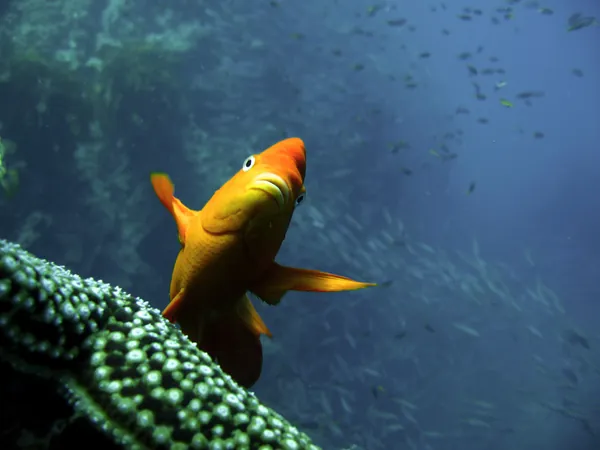
Revolutionary Discovery: Fish Burn Double the Energy While Hovering!
2025-07-07
Author: Noah
The Unseen Struggle of Fish in the Water
Fish may seem to effortlessly hover in the water, but groundbreaking research from the University of California San Diego's Scripps Institution of Oceanography has revealed that maintaining this position requires almost double the energy compared to simply resting. This eye-opening finding flips the script on long-held beliefs in the scientific community.
Redefining Fish Behavior: The Energy-Expenditure Myth
For years, it was thought that fish could glide motionlessly thanks to their swim bladders, allowing them to achieve neutral buoyancy and thus float with little effort. However, scientists have discovered that the seemingly effortless act of hovering comes with a hefty energy price tag, with fish burning roughly twice as much energy in this stance.
Biomechanics Behind Hovering: A Continuous Balancing Act
Lead researcher Valentina Di Santo and her colleagues conducted extensive experiments on 13 species of fish equipped with swim bladders. They monitored these fish's oxygen consumption while they hovered and rested, revealing a fascinating truth: constant adjustments and fin movements are imperative for fish to remain stable in the water.
The Balancing Act: Stability vs. Instability
Di Santo pointed out that hovering is akin to balancing on a stationary bicycle. Despite their buoyant bodies, fish face inherent instability, with their center of mass and buoyancy often misaligned, necessitating continuous fin adjustments to prevent tipping or rolling.
Surprising Insights: Fish Shape Influences Energy Use
Notably, fish with a greater separation between their centers of mass and buoyancy consumed more energy during hovering. The shape of a fish also plays a critical role in its efficiency; those with pectoral fins positioned further back utilized energy more effectively. Long and slender species struggled with hovering, while compact-bodied types like goldfish exhibited greater efficiency.
Implications for Robotics: Learning from Nature's Designs
These revelations could reshape the design of underwater robots and drones. By mimicking the balance techniques of fish, engineers can develop more agile and efficient machines capable of navigating complex environments like coral reefs. Di Santo emphasizes that while stability is crucial, a degree of controlled instability might be key for achieving high maneuverability.
A New Perspective on Fish and Their Energetic Costs
This research not only changes our understanding of fish behavior—transforming how we view their hovering as a demanding activity—but also highlights the evolutionary trade-offs in fish designs. As fish adapt to their habitats, the energy cost associated with their hovering skills stands as a testament to their agility and survival strategies in challenging environments.
Final Thoughts: The Hidden Lives of Fish Revealed
As we uncover these secrets of fish movement, we gain valuable insights not only for aquatic biology but also for technology that seeks to emulate these remarkable creatures. The quest for innovation in underwater robotics gains a powerful ally in the study of fish, inspiring designs that could lead to unprecedented advancements in exploration and stability.









 Brasil (PT)
Brasil (PT)
 Canada (EN)
Canada (EN)
 Chile (ES)
Chile (ES)
 Česko (CS)
Česko (CS)
 대한민국 (KO)
대한민국 (KO)
 España (ES)
España (ES)
 France (FR)
France (FR)
 Hong Kong (EN)
Hong Kong (EN)
 Italia (IT)
Italia (IT)
 日本 (JA)
日本 (JA)
 Magyarország (HU)
Magyarország (HU)
 Norge (NO)
Norge (NO)
 Polska (PL)
Polska (PL)
 Schweiz (DE)
Schweiz (DE)
 Singapore (EN)
Singapore (EN)
 Sverige (SV)
Sverige (SV)
 Suomi (FI)
Suomi (FI)
 Türkiye (TR)
Türkiye (TR)
 الإمارات العربية المتحدة (AR)
الإمارات العربية المتحدة (AR)